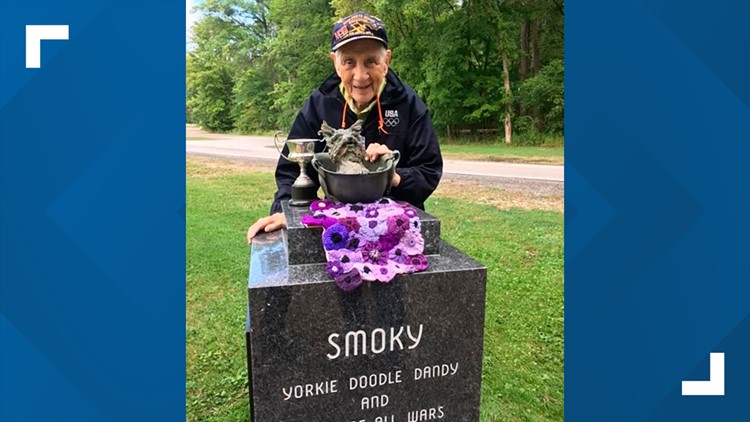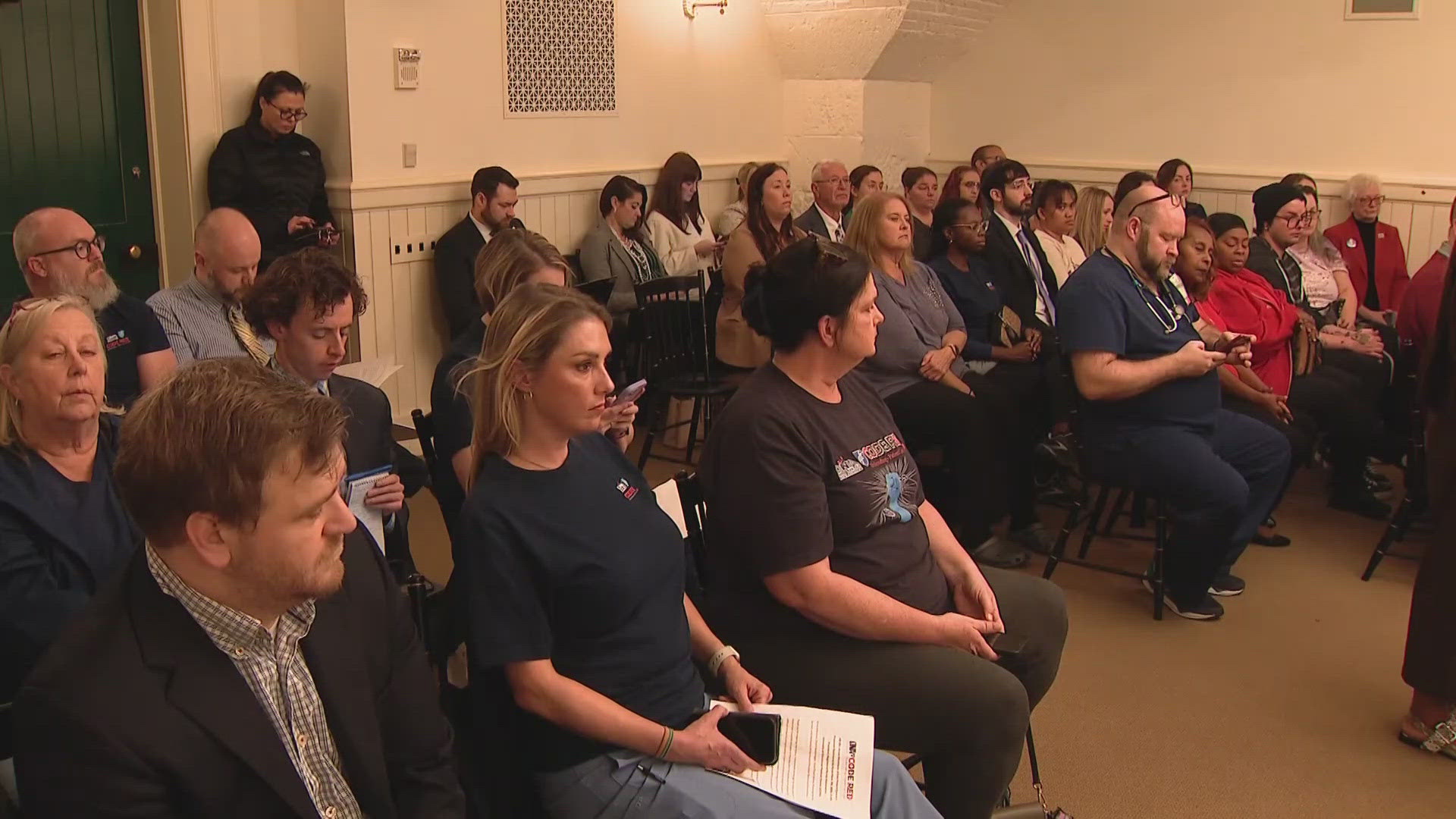Although many nursing homes continue to accept new residents, Ohio's two homes for veterans still aren't accepting additional patients nearly a year after the coronavirus pandemic first hit the state.
The waiting list for the veterans home in Georgetown in southern Ohio currently stands at 43 for both nursing home and memory care residents, with fewer than one of every two of its 168 beds currently filled.
The waiting list is 88 at the home in Sandusky for nursing home residents and 30 for the independent living unit. About two of every three of Sandusky's total of 633 beds are currently filled. Occupancy rates were above 90% pre-pandemic.
The decision to stop accepting new residents in March of last year was safety related, said Jeff Rapp, spokesperson for the Ohio Department of Veterans Services. The agency reduced entry points to the facilities, added screening for everyone who enters, improved air flow, and reconfigured some areas to create quarantine units for symptomatic COVID-19 patients, among other measures.
The Sandusky facility has seen 157 cases and 44 confirmed and probable deaths, with 82 cases and 17 deaths at the Georgetown facility.
Full occupancy is difficult because of residents' changing health needs, Rapp said. In Georgetown, for example, two rooms and four beds are currently being used as a nursing station.
Veterans Services is looking at the possibility of allowing new admissions again with nearly all residents having had at least the first vaccine doses and both facilities now being free of COVID-19 cases, Rapp said.
He called the decision to put admissions on hold a difficult one but necessary “to achieve maximum safety for our veterans and staff.”
One of the vets hoping the moratorium is lifted soon is William Wynne, a World War II Army Air Corps veteran from Mansfield. He's been bedridden since October, when he broke his back in a fall.
Wynne, 98, is due for release early next month from a skilled nursing facility but can't return home, where he had lived on his own. He's had both doses of the coronavirus vaccine.
Wynne was a reconnaissance photographer in the South Pacific during the war, and worked as a photographer at both The (Cleveland) Plain Dealer and at NASA's Glenn Research Center. He likes the idea of spending his days around other veterans, feeling he'd have much in common.
For now, he waits patiently, taking the delay in stride with a fortitude common among what's known as the “Greatest Generation.”
“Waiting is an attribute that you get when you’re a World War II vet,” he said in an interview.
His family is a little less patient, and wonders why an Ohio-run facility isn't accepting new patients.
“The fact that there is a virus does not change the fact that veterans and seniors need to live their lives in a way that would optimize their quality of life,” said Jay Wynne, the youngest of William Wynne's nine children and an Army veteran of Operation Desert Storm.
On top of the veterans' homes good reputation, the Ohio facilities are also affordable for someone in his dad's situation, Jay Wynne said.
Veteran and state Rep. Haraz Ghanbari shares the goal of shortening the waiting list and getting eligible veterans into the home but only if it can be done safely both medically and based on quality of life.
It wouldn't be right to enroll veterans looking forward to camaraderie with other vets only to isolate them in quarantine as soon as they're inside, said Ghanbari, a Perrysburg Republican and chairman of the House Armed Services and Veterans Affairs Committee.
“I don’t think this is going to be as simple as one day they just say, ‘OK, everything’s open back up,’” he said. “They want to be sure that there’s a plan that has checks and balances and accountability so that we can continue to take care of our men and women that have given so much to this nation.”
Nationally, veterans homes have handled admissions differently and based on the situation in their own states, said Melissa Jackson, president of the National Association of State Veterans Homes and CEO of the Vermont Veterans' Home.
In Delaware, the veterans home has not been accepting new residents because of the coronavirus and currently has only 56 residents, less than half its capacity of 144. The total number of staff is 176.
The Vermont facility stopped taking new admissions in March, resumed in the summer by taking one or two veterans a week, and then stopped again in December following a coronavirus outbreak. The current waiting list is about 15.
“Family members are calling every day, ‘Hey, we really want to get our loved one in there,’ but they're also understanding of our current pause,” Jackson said.



